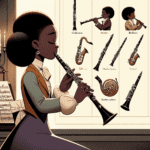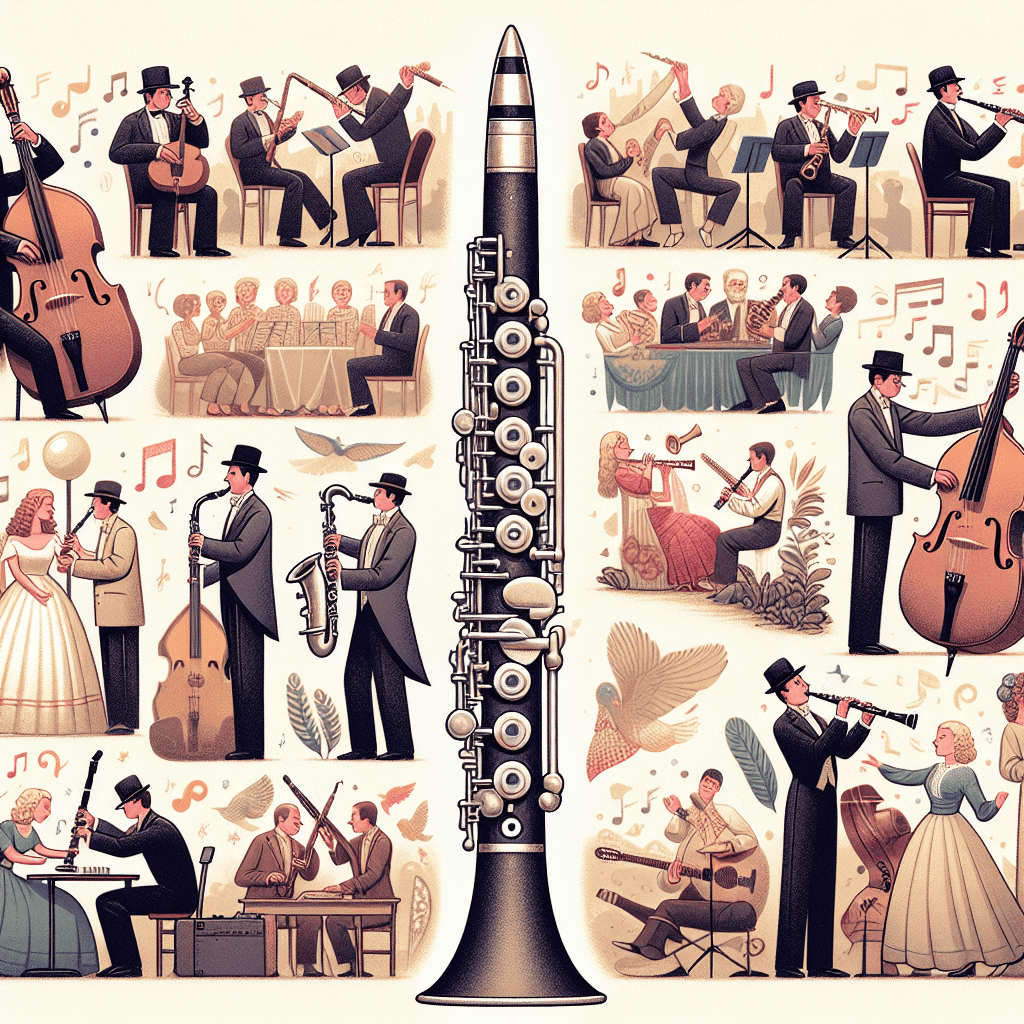The Clarinet's Global Journey
The clarinet in world music history is a vibrant story that spans continents and cultures. This instrument, often seen as a staple in orchestras, has also carved out a niche in various folk traditions, blending seamlessly into an array of musical styles. From the smoky jazz clubs of New Orleans to the rhythmic patterns of African tribal music, the clarinet has left its mark, and it continues to do so today. Did you know that the clarinet's roots can be traced back to the early 18th century, evolving from earlier instruments like the chalumeau? The sound of the chalumeau, a predecessor of the clarinet, laid the groundwork for what would become a beloved woodwind instrument worldwide.
A Global Embrace: The Clarinet in Different Cultures
As we explore the clarinet's journey, we find it has been embraced by numerous cultures, each adding their unique flavor. In Klezmer music, which originated from the Jewish communities of Eastern Europe, the clarinet's expressive capabilities shine through. It mimics the human voice, conveying deep emotion with every wail and cry. Musicians like Naftule Brandwein, a legendary Klezmer clarinetist, elevated the instrument's status, demonstrating its beauty and versatility in folk contexts. When the clarinet plays Yiddish melodies, it carries the weight of history, memory, and culture.
| Region | Musical Style | Clarinet's Role |
|---|---|---|
| Eastern Europe | Klezmer | Emotive, voice-like expressions |
| South America | Cumbia, Música Guajira | Lively, rhythmic accompaniment |
| North America | Jazz | Improvisational, melodic lead |
| Africa & Caribbean | Salsa, Merengue | Vibrant solos, lead voice |
| Australia | Indigenous fusion | Contemporary interpretations |
South American Rhythms and the Clarinet
In South America, the clarinet finds a home in the rhythms of cumbia and música guajira. In these lively styles, the clarinet dances alongside accordions and percussion instruments, contributing to the energetic sounds that define these genres. Picture the bright, joyful notes of a clarinet leading the way as dancers sway to the infectious rhythms of a street festival!
The Jazz Revolution and the Clarinet
The clarinet's impact on jazz music is profound, becoming synonymous with the iconic sounds of players like Benny Goodman and Sidney Bechet. Goodman's performance at Carnegie Hall in 1938 marked a significant milestone in the acceptance of jazz as a legitimate form of music, and his clarinet echoed through the halls, changing perceptions of the genre forever. Those fast runs and smooth phrases captured the hearts of many. In jazz, the clarinet isn't just an instrument; it's a storyteller weaving in and out of melodies, improvising its own path.
The Clarinet's Global Reach
The clarinet's reach extends to African and Caribbean music, where its adaptability shines. In genres like Salsa and Merengue, the clarinet sometimes plays the role of the lead voice, taking on vibrant solos that captivate listeners. World music creates unexpected connections between cultures, and the clarinet stands as a bridge, linking musical traditions across the globe.
Australian Influence on Clarinet Music
Australia has welcomed the clarinet into Indigenous music, where it has been integrated into contemporary interpretations, creating a rich sound that respects traditional values while innovating new expressions. The usage of the clarinet in these contexts showcases its ability to not just mimic, but to connect deeply with a community's spirit.
Technical Aspects of the Clarinet
The clarinet's construction plays a big role in its versatility. With its single-reed mouthpiece, a range of keys, and the ability to produce a wide variety of tones, it can easily adapt to the sound palette of different musical traditions. It can sound bright and punchy for fast-paced jazz pieces, or smooth and legato for lyrical folk songs. Many professional players have turned to brands like Martin Freres for their quality craftsmanship and attention to detail. This brand has made strides in building instruments that serve as the backbone of many orchestras and solo performances. Their legacy reminds us that the clarinet's journey is intertwined with craftsmanship as well as music-making.
The Art of Improvisation
When looking at the clarinet's evolution in world music history, it's worth noting the improvisational skills it encourages. The instrument invites players to explore their creativity. Whether in a classical setting or a lively jam session, clarinetists find freedom in expression, thanks to the flexibility of this remarkable woodwind. Many have been captivated by a clarinet solo going off-script, exploring themes and improvisations that take the audiences on an emotional journey.
Conclusion: The Clarinet's Lasting Legacy
The clarinet in world music history tells a tale of shared experiences and cross-cultural connections. It opens a window to understanding how different communities have embraced this instrument, resulting in unique expressions ?. Whether it's playing a hauntingly beautiful melody that stretches through time or thrumming through a lively dance rhythm, the clarinet stands tall as a symbol of humanity's collective love for music. As you embrace this instrument and its versatility, remember: the clarinet has not only shaped music history but continues to be a vital part of creating a rich sonic landscape worldwide.
Table of Contents
- The Clarinet's Global Journey
- A Global Embrace: The Clarinet in Different Cultures
- South American Rhythms and the Clarinet
- The Jazz Revolution and the Clarinet
- The Clarinet's Global Reach
- Australian Influence on Clarinet Music
- Technical Aspects of the Clarinet
- The Art of Improvisation
- Conclusion: The Clarinet's Lasting Legacy







